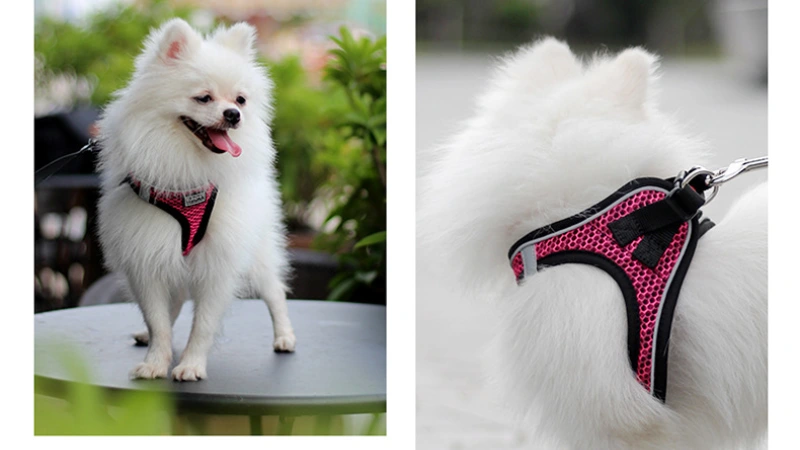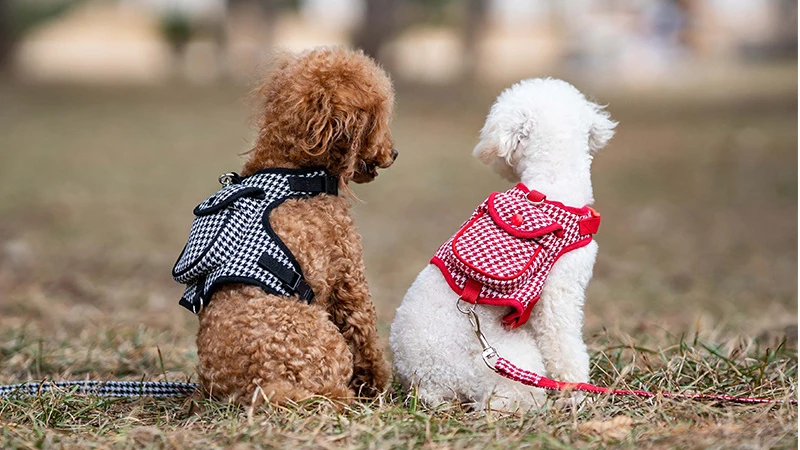Have you ever found yourself in the pet aisle, overwhelmed by the plethora of dog harnesses, wondering which one is the perfect fit for your furry friend? You’re not alone. The right dog harness can significantly enhance the safety, comfort, and control during walks, runs, and other adventures, making the choice an important one. Let’s delve into the world of dog harnesses, exploring the various types available and how to select the one that best suits your dog’s needs.
Understanding the Different Types of Dog Harnesses
1. Standard Harnesses

Standard harnesses are the most common and versatile type. They typically have a simple design with straps that go around the dog’s chest and back, fastening together with buckles. The leash attaches to a ring on the back of the harness. These are great for everyday use, providing comfort and control without putting pressure on the dog’s throat. They work well for small to medium-sized dogs and those that don’t have a strong tendency to pull.
2. No-Pull Harnesses

No-pull harnesses are specifically designed to discourage pulling by redistributing the pressure when a dog tries to pull. They usually have a front-leash attachment point located on the chest, which gently steers the dog back towards the owner when they pull, making it easier to manage strong pullers. These harnesses are ideal for training purposes and for larger breeds that tend to have more strength.
3. Step-In Harnesses

Step-in harnesses are named for their ease of use; the dog simply steps into the harness before it’s pulled up and buckled over their back. This design is particularly suitable for dogs who dislike having harnesses pulled over their heads. Step-in harnesses evenly distribute pressure and are excellent for small to medium-sized dogs, including those with delicate necks.
4. Adjustable Harnesses

Adjustable harnesses offer multiple points of adjustment to ensure a perfect fit. They can be tailored to accommodate dogs of all shapes and sizes, making them a versatile choice for growing puppies or dogs with unique body types. These harnesses often feature adjustments around the neck, chest, and sometimes the back, ensuring a snug and secure fit.
5. Tactical Harnesses

Tactical harnesses are built for durability and functionality. They often come with heavy-duty materials, reinforced stitching, and features like handle grips for control or attachment points for gear and patches. These harnesses are ideal for working dogs, service dogs, or pets that accompany their owners on outdoor adventures.
6. Vest Harnesses
Vest harnesses, as the name suggests, have a vest-like design that offers more body coverage. This type can provide additional support and comfort, especially for dogs with anxiety, as the extra coverage can have a calming effect. They’re also great for colder climates, as many vest harnesses are made with warmer materials. Suitable for small breeds, older dogs, or those with injuries.
7. Harnesses with Reflective Features
While not a separate category on their own, many harnesses come with reflective stitching or panels to increase visibility during nighttime walks. This feature is crucial for safety and can be found incorporated into various types of harnesses.
8. Padded Harnesses
Padded harnesses offer extra comfort through additional cushioning around the chest and back areas. This padding can help prevent rubbing and discomfort during walks, making them a great choice for dogs with sensitive skin or those who spend a lot of time on the leash.
How to Choose the Right Harness
Consider Your Dog’s Needs and Behavior
The perfect harness addresses your dog’s specific needs and behaviors. For instance, a no-pull harness can be a game-changer for a dog that pulls on the leash.
Measure Your Dog Correctly
A harness that fits well is crucial for your dog’s comfort. Take accurate measurements of your dog’s chest and neck to ensure a snug fit.
Think About Your Activities
Your lifestyle should influence your choice of harness. For example, a padded harness might be more suitable for long hikes, whereas a safety harness is essential for frequent travelers.
Check for Quality and Comfort
Materials matter. Look for durable harnesses with comfortable padding and adjustability to ensure a good fit and longevity.
Ease of Use
Consider how easy the harness is to put on and take off, especially if your dog is not cooperative. A step-in harness or one with quick-release buckles might be a good option.
Additional Tips
Introducing a new harness to your dog should be a gradual process. Allow them to get used to it at their own pace. Also, regular maintenance and care of the harness will extend its life and ensure it remains comfortable and safe for your dog to wear.
Conclusion
Choosing the right dog harness can make all the difference in the world for both you and your pet. It’s not just about control; it’s about comfort, safety, and enjoying the great outdoors together. If the first harness you try isn’t a perfect fit, don’t hesitate to explore other options. Your dog’s comfort and safety are worth the effort.





